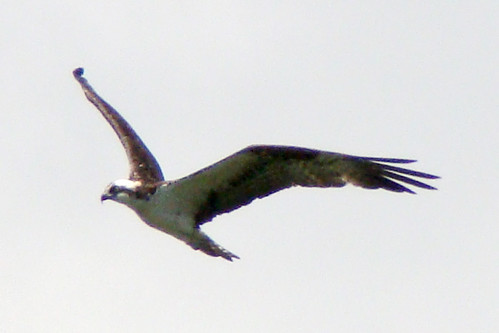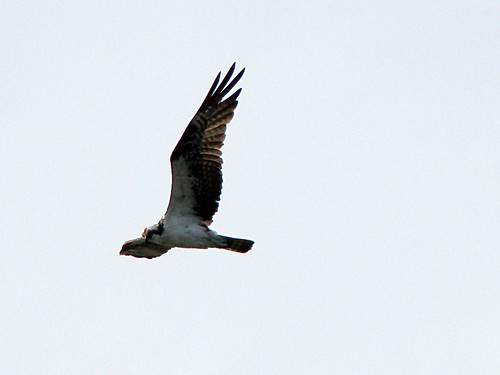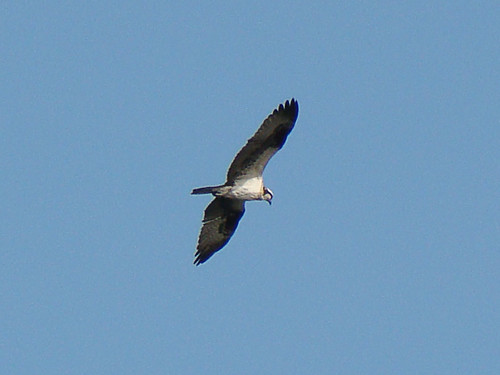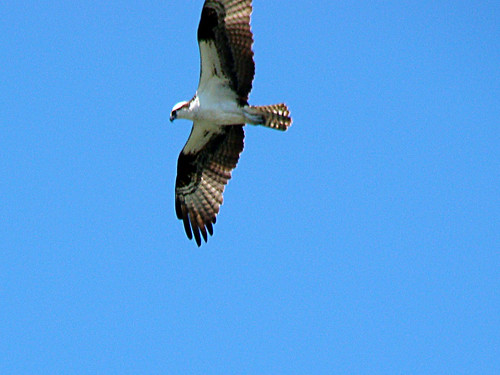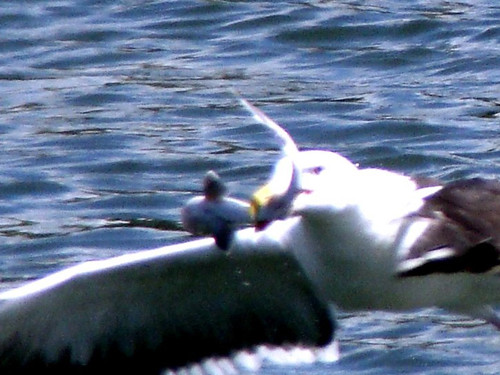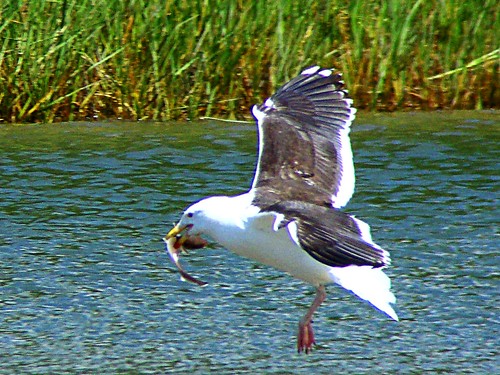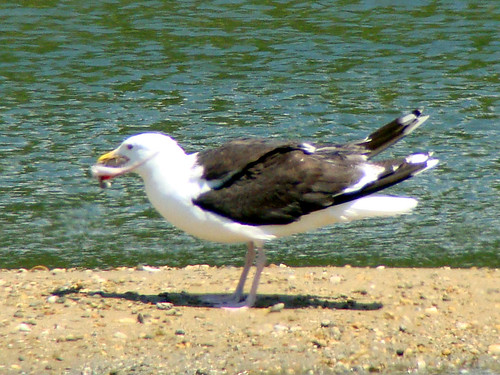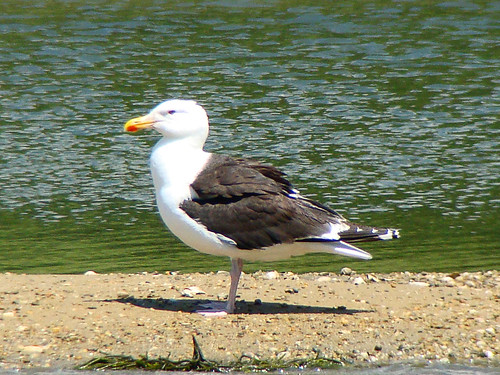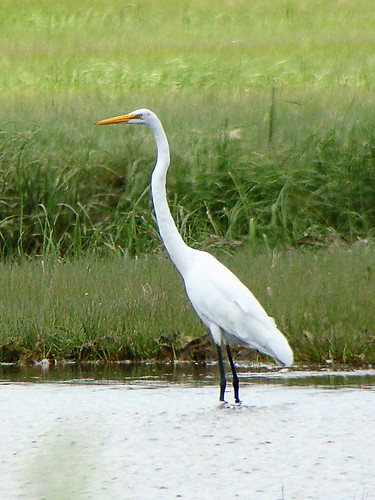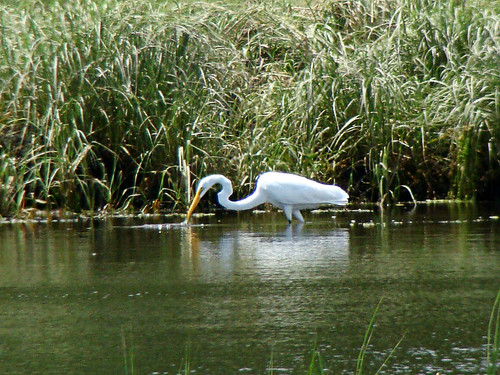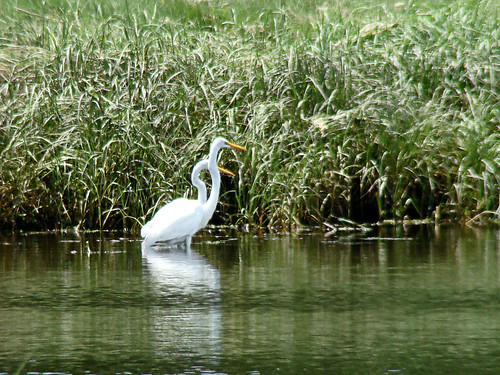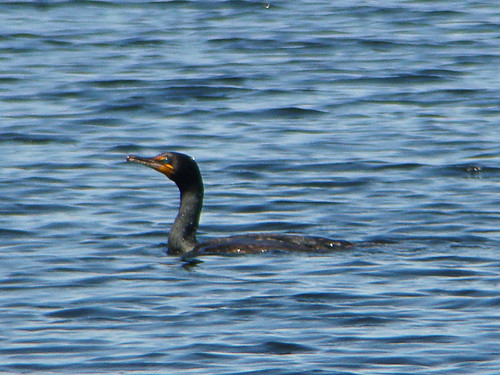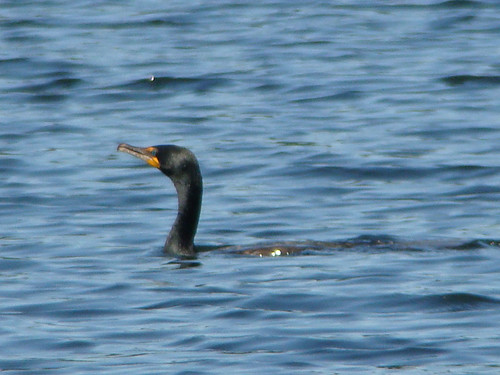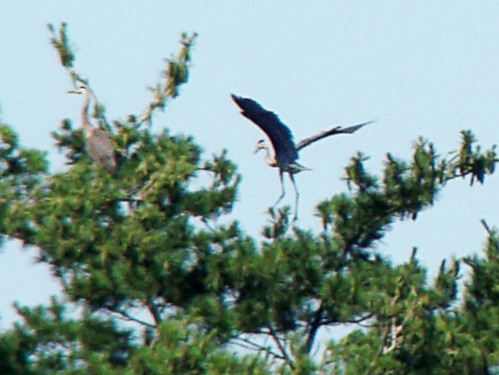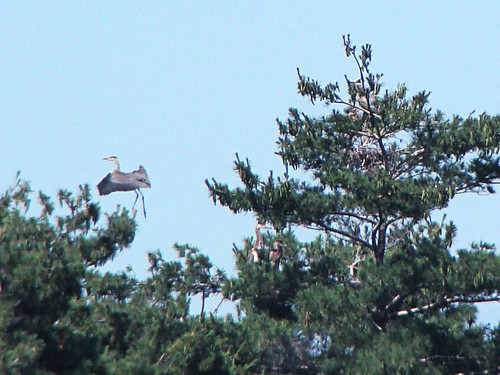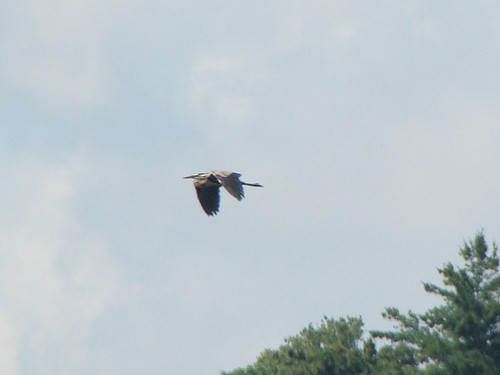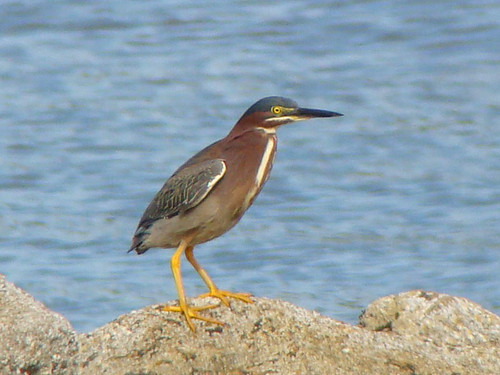
A small, stocky wading bird, the Green Heron is common in wet spots across much of North America. It can be difficult to see as it stands motionless waiting for small fish to approach within striking range, but it frequently announces its presence by its loud squawking. These excellent photos were taken by my husband. You'll see a variety of poses to help you ID a Green Heron of your own!
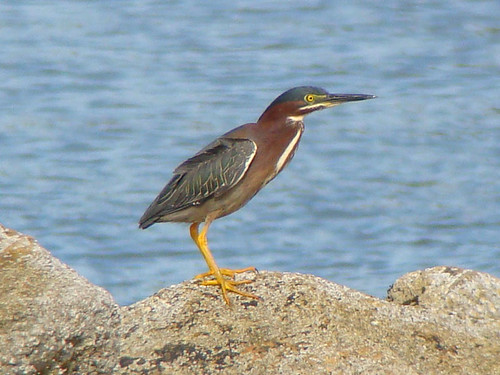
This is the typical view of a Green Heron, prompting many to wonder if it is a heron at all.

It's rare (and rather comical!)to see a face first view like this!
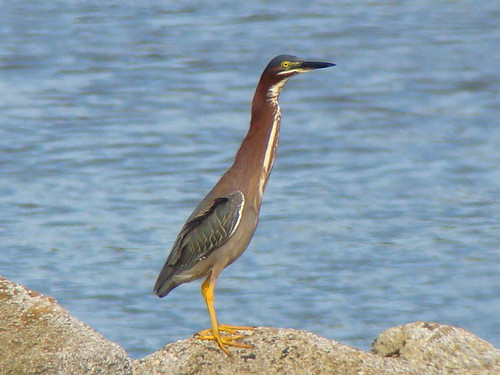
Now it is clear why this bird is in the Heron family. He has an elongated neck after all!
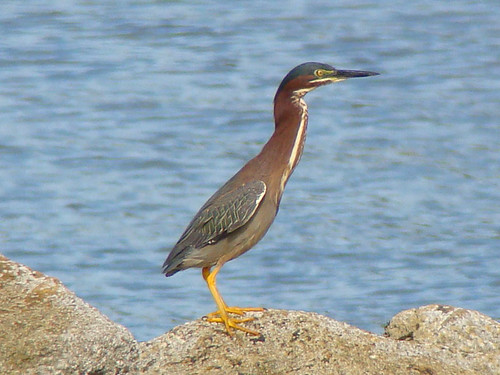
The Green Heron is one of the few tool-using birds. It commonly drops bait onto the surface of the water and grabs the small fish that are attracted. It uses a variety of baits and lures, including crusts of bread, insects, earthworms, twigs, or feathers.
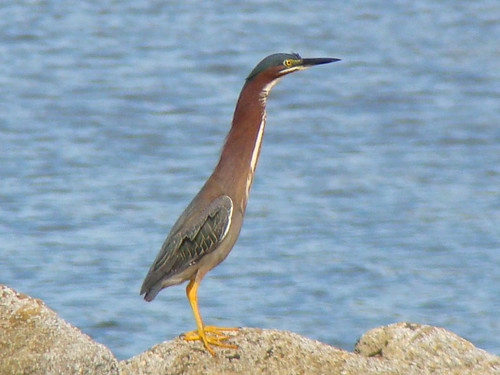
Check out that baleful stare!


